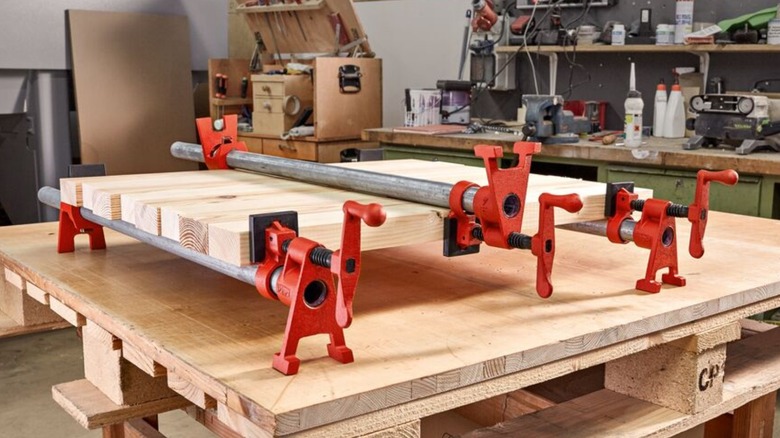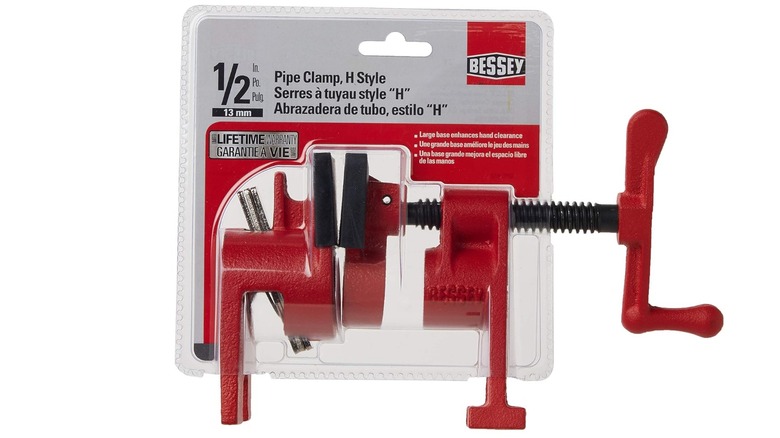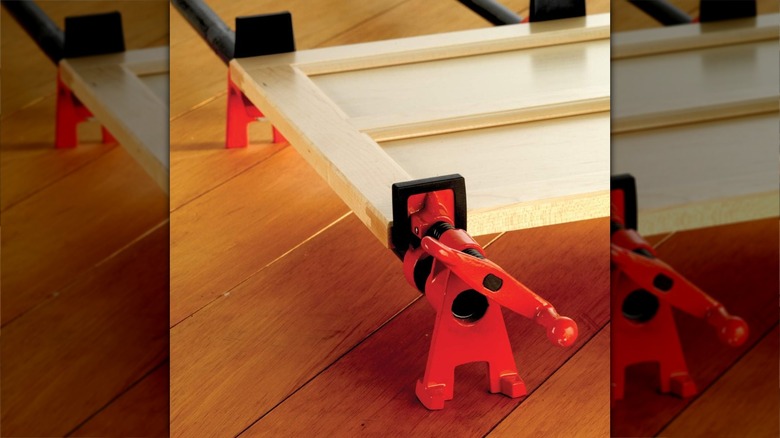These Are The Best Clamps For Woodworking
We may receive a commission on purchases made from links.
Clamps are one of the most useful items you can have in a wood shop, but they are often among the most overlooked. A good set of clamps might not be as exciting as an expensive new power tool like a portable table saw or as vital as the accessories you need to stay safe, like eye protection, but they're an absolute essential for just about every project you'll take on.
Clamps can be used to stabilize pieces during cuts, hold pieces together while assembling them with fasteners, to hold jigs in place while you use them, to prevent warping or movement during the work process, and–perhapes most important of all–clamps provide the pressure that wood glue requires to properly set when attaching joints.
I've been woodworking for the better part of a decade, and I've had the opportunity to use a lot of different kinds of clamps. C-clamps, quick-grip clamps, and F-clamps are versatile tools that are always good to have on hand for simple holding power, while right-angle clamps and strap clamps can be useful for attaching corners and unusual shapes. You can stock up on lots of items like these for under $5 at your local Harbor Freight, and you should be able to do all kinds of projects. Each of them has its own specialization and is useful for different situations. There isn't a single clamp that can do every job. That said, there's one type of clamp that I find myself coming back to more and more: pipe clamps.
What are pipe clamps?
Pipe clamps are very different from most of the other types of clamps that you might find at your local hardware store for a few different reasons, but the first one that you're likely to notice is that they don't come fully assembled. Most pipe clamps are sold as two separate pieces that serve as the clamp's stops. They do not typically include any kind of bar to connect them. This is because these two stops are designed to fit over a separately purchased length of either ½-inch or ¾-inch metal pipe. This might seem a bit inconvenient, but it actually allows you to choose the exact length you want the clamp to be. Many hardware stores, including big box stores like Lowe's and Home Depot, will offer pipe cutting and threading services that allow you to get these pipes cut to custom lengths.
The stops that are sold in the kit serve different purposes in the clamp once it is assembled. One is a rear fixture that is able to slide up and down the pipe and lock into any position along its length. This allows you to line it up as an immovable backstop anywhere you want on the pipe. The other is a front fixture the screws onto the pipe's threaded end. This includes a crank handle which tightens or loosens a threaded screw mechanism that moves the front stop forward and applies pressure against the workpiece. This mechanism is able to create significantly more pressure than most hand-turned or quick-grip style clamps. The wide stops also help to provide even pressure distribution across the surface of the clamped piece.
What kind of projects are pipe clamps good for?
Pipe clamps are best known for their ability to clamp large pieces that require a lot of pressure. This is invaluable in large panel glue-ups, like tabletops, desks, and doors. Side note: The black gas pipes sold in hardware stores tend to be the cheapest, but the black coating will react with PVC wood glue, which is the strongest option for your woodworking projects, and stain your piece. Those who plan to use pipe clamps for glue-ups would be much better off spending a little more to get the galvanized pipes and saving themselves the future headache.
Glue-ups aren't the only reason to get pipe clamps, though. The extra reach makes them an ideal choice for furniture assembly. There are few other clamps that would be able to apply pressure across the length of large items such as beds, bookcases, work benches, and tables. Cabinet making is yet another area where they excel, as pipe clamps can be used to hold several of the large, boxy pieces together when glueing and fastening them in place.
You don't just have to use them for big projects, either. Even glue-ups and joinery on smaller items like cutting boards can benefit from the powerful and even pressure that these clamps produce. The biggest downside to pipe clamps is that they're heavy and require a bit more setup than something like an F-clamp that you can just throw on a project quickly and without as much fuss. That said, I personally keep several 8-foot and 4-foot lengths of pipe clamps in my shop and use them all regularly.


